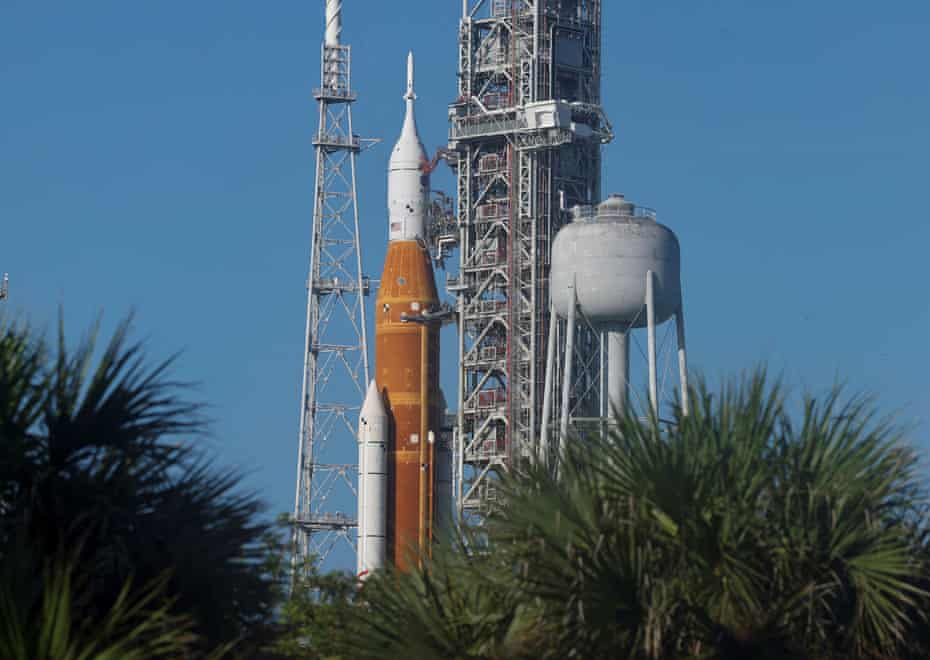Artemis I: NASA has missed the first launch window for its SLS rocket
NASA has had to delay the launch of its powerful SLS rocket. New Scientist’s Leah Crane reports from the scene in Florida

The first launch of NASA’s huge Space Launch System (SLS) rocket has been delayed once again. Engineers are now working to fix the issues that thwarted the 29 August launch attempt in the hopes of trying again in early September.
It’s been raining on and off at Cape Canaveral in Florida for a week. The night I arrived, lightning struck the towers erected for that very purpose around SLS on its launchpad. As other journalists and I began arriving at NASA’s Kennedy Space Center early on 29 August, the skies opened up.
But the rain wasn’t the biggest problem for the Artemis I mission, the start of NASA’s campaign to send humans back to the moon for the first time since 1972. In a rehearsal in April, SLS faced a leak in one of its liquid hydrogen lines. On launch day, it leaked again. Then the tube used to load the hydrogen got too warm. By the time it had been cooled down and hydrogen started pouring into the tank again, the mood in the press room had changed despite the clearing skies.
It was nearly 4:00 in the morning local time, with the launch window scheduled for 8:33 to 10:33, and the delays were already piling up. There was talk of packing up the coffee machine. But the rocket was still being loaded with fuel, so we stuck it out.
So did NASA, continuing to fuel up the rocket. Around 6:00, two more issues cropped up: one of the four engines wasn’t cooling down sufficiently, and what appeared to be a crack appeared between the hydrogen and oxygen tanks. The crack later turned out to be in foam insulation, not the tanks themselves, but the engine issue persisted for the rest of the morning.
In the end, engineers weren’t able to solve the problem in time. The next launch window opens on 2 September, with another on 5 September. If the spacecraft has to be rolled back inside to fix the engine issue, it will likely be delayed beyond that.
After years of delays, a few more days or weeks may not seem like much, but such an abrupt stop when the launch seemed so close at hand was hard to stomach. Nevertheless, there was nothing left to do but pack away the coffee machine, leave the Kennedy Space Center, and wait for NASA to try again.



